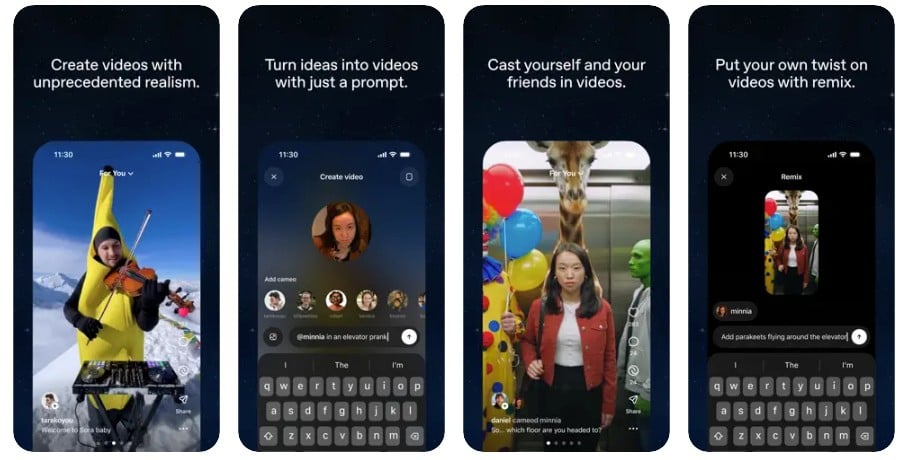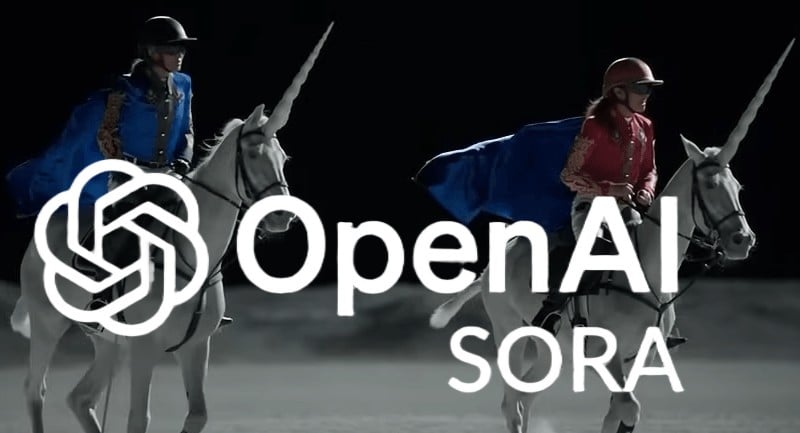OpenAI has soft-launched an upgraded version of its video generation model Sora. The imaginatively-branded Sora 2 promises AI-generated video that is “more physically accurate, realistic, and more controllable.” The game-changer in Sora 2 is that it offers synchronised dialogue and sound effects.
The first iteration of Sora was released back in February 2024 and shocked people with what was possible. It was impressive, but very quickly the flaws in the video were evident. Writing for Wired, journalist Steven Levy commented on a demo video featuring two people walking along a path in Japan. “It’s not perfect. Only when you watch the clip a few times do you realize that the main characters—a couple strolling down the snow-covered sidewalk—would have faced a dilemma had the virtual camera kept running. The sidewalk they occupy seems to dead-end; they would have had to step over a small guardrail to a weird parallel walkway on their right. Despite this mild glitch, the Tokyo example is a mind-blowing exercise in world-building.”
That was the prevailing sentiment: It wasn’t perfect, but represented both a huge step forward and showcased the promise of what is possible.
Sora 2 is a massive jump forward and the introduction of synchronised sound is impressive. In the announcement about Sora 2, OpenAI was realistic about the journey ahead, recognising that its work in video is still in its early days. In a statement on its promotional Sora 2 page, OpenAI stated: “The Sora team has been focused on training models with more advanced world simulation capabilities. We believe such systems will be critical for training AI models that deeply understand the physical world. A major milestone for this is mastering pre-training and post-training on large-scale video data, which are in their infancy compared to language.”
Last week, OpenAI briefed talent agencies and Hollywood studios to about the launch of Sora 2. The Wall Street Journal reported yesterday that copyright owners would be forced to explicitly ask OpenAI not to include their owned-material if they want to opt-out. The approach is not dissimilar to the approach YouTube took when building its library.
The Sora video tool will not generate images of public figures without their permission.
This is the promotional video released by OpenAI to showcase what is now possible with Sora 2. The duck race in the video is particularly impressive.
There is also this shorter clip reel that is interesting. Presumably no animals were injured during the creation of this AI video…
OpenAI’s TikTok-style app
In addition to access via the web, OpenAI is launching Sora 2 through a social iOS app that will just be branded as Sora.
At launch it is only available in the US and Canada.
Users will be able to create videos based on text prompts, remix other users generations, and discover new videos in a ‘For You’ style feed. In an interesting feature, users can add themselves and friends into any Sora scene following a short, one-time video and audio recording to verify identity and likeness. While OpenAI have said that it will place stricter controls for teen users and will let users revoke access to their likeness, it might still be worth having a chat to younger people about who they allow to use their likeness for videos like this.

The iOS Sora app as seen on the app store
The app is invite-only at first. In the coming weeks, the app will be available to ChatGPT users.
OpenAI will prioritise Sora 1 power users and ChatGPT Pro subscribers. They will be followed then by those on Plus and Team plans. Eligible users will get a push notification in the ChatGPT app.
Developers have been advised that API access and Sora 2 Pro are coming soon.
Financials
Sora 2 development hasn’t been cheap.
In a report published in The Information this week, OpenAI was said to have generated $4.3 billion in revenue in the first half of this year. OpenAI projects full-year revenue of $13 billion. The Information reported that OpenAI “spent $2.5 billion over the same time period, in large part due to its high research and development costs for developing its AI models.”
Other expenses this year included $2 billion on sales and marketing. It contributed to OpenAI posting an operating loss of $7.8 billion in the first half of the year.
